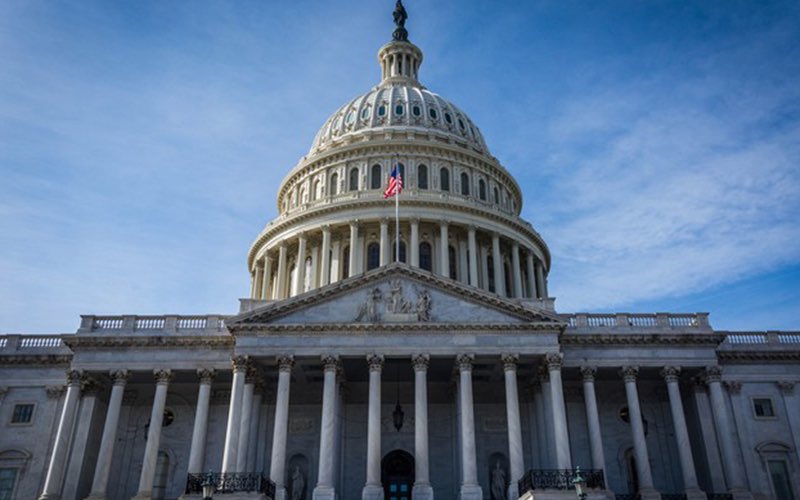Gold prices trade below all-time highs as market focus shifts to the risk of a US government shutdown
2025-10-01 02:08:10

If US lawmakers fail to reach a funding agreement by midnight on Tuesday, the risk of a US government shutdown will continue to rise. Against this backdrop, investor demand for safe-haven assets is supporting underlying buying in gold, keeping it stable. Meanwhile, ongoing geopolitical friction continues to reinforce gold's appeal as a preferred safe-haven asset, while the US's re-imposition of tariffs has sparked concerns about global trade, further strengthening demand for gold as a hedge against uncertainty.
Furthermore, investors increasingly believe that further interest rate cuts from the Federal Reserve (Fed) are more likely. This reduces the opportunity cost of holding non-yielding gold. Against this backdrop of rising risk aversion and expectations of looser monetary policy, the overall outlook for gold remains constructive.
Market drivers: Risk sentiment remains cautious amid US shutdown and global tensions
US economic data provided limited support for the dollar. Data from the Conference Board showed that its consumer confidence index fell to 94.2 in September from a revised 97.8 in August, while the JOLTS job openings rose slightly to 7.23 million in August from 7.21 million in July, roughly in line with market expectations.
Fears of a U.S. government shutdown intensified after a White House meeting between President Donald Trump and congressional leaders on Tuesday failed to produce any breakthroughs. Unless lawmakers reach a last-minute deal, the shutdown could begin on Wednesday.
A potential shutdown could disrupt the release of key US economic data. The Bureau of Labor Statistics (BLS) confirmed on Monday that it would suspend operations and release no economic data during the government shutdown. This means that if a shutdown occurs, the non-farm payroll report (NFP) scheduled for Friday will not be released on schedule. The shutdown could also delay the monthly Consumer Price Index (CPI) report, originally scheduled for October 15th.
US President Trump announced new tariffs on Monday evening. Effective October 14th, a 10% tariff will be imposed on lumber, and tariffs on kitchen cabinets, bathroom vanities, and some fabric furniture will be increased to 25%. The US government invoked Section 232 of the U.S. Trademark Law on national security grounds and warned that tariffs could rise further in January if a new trade agreement is not reached.
Geopolitical tensions continue to escalate. As the conflict in Ukraine intensifies, Russia has launched its largest autumn conscription since 2016, calling up 135,000 soldiers, while continuing its massive drone and missile attacks on Ukrainian cities.
Meanwhile, US President Trump met with Israeli Prime Minister Benjamin Netanyahu on Monday and the two jointly unveiled a 20-point peace proposal for Gaza, calling for a ceasefire, disarmament and the establishment of a "peace committee" overseen by an international transitional body.
Federal Reserve Vice Chairman Philip Jefferson said on Tuesday that the U.S. labor market is weakening and could face pressure if it lacks support, but he stressed that the Fed does not need to see further weakening in the job market at this stage. He expects U.S. economic growth to remain around 1.5% for the rest of the year and expects inflation to fall again after this year. Jefferson said the recent interest rate cuts have brought policy closer to the neutral interest rate—a concept he believes is "valuable," but one that requires accepting uncertainty and taking prudent action. He added that the Fed is ready to use all its tools to fulfill its mission.
Technical analysis: Spot gold stabilizes around $3,800

(Source of spot gold 4-hour chart: Yihuitong)
Spot gold has stabilized above the psychologically important $3,800 level, which also marks the 21-period simple moving average (SMA) on the 4-hour chart – a level where buyers re-entered the market after the metal retreated sharply from its all-time high near $3,871.
As long as the $3,800 mark holds firm, the short-term market bias remains constructive. A rebound from this range could pave the way for another push towards the recent high near $3,871. If bullish momentum resumes, gold could even head towards the $3,900 mark.
However, a clear break below $3,800 would shift the short-term market bias to bearish and potentially pull the price back into its previous consolidation range, which has strong support at the bottom of $3,700, further reinforced by the 100-period Simple Moving Average (SMA).
The Relative Strength Index (RSI) has fallen from overbought territory to around 61, suggesting a correction is warranted after the sharp rally to new all-time highs. Cooling momentum suggests the market may be entering a period of consolidation, while the Average Directional Index (ADX) is currently around 31, indicating that the current uptrend still has underlying momentum.
- Risk Warning and Disclaimer
- The market involves risk, and trading may not be suitable for all investors. This article is for reference only and does not constitute personal investment advice, nor does it take into account certain users’ specific investment objectives, financial situation, or other needs. Any investment decisions made based on this information are at your own risk.





















